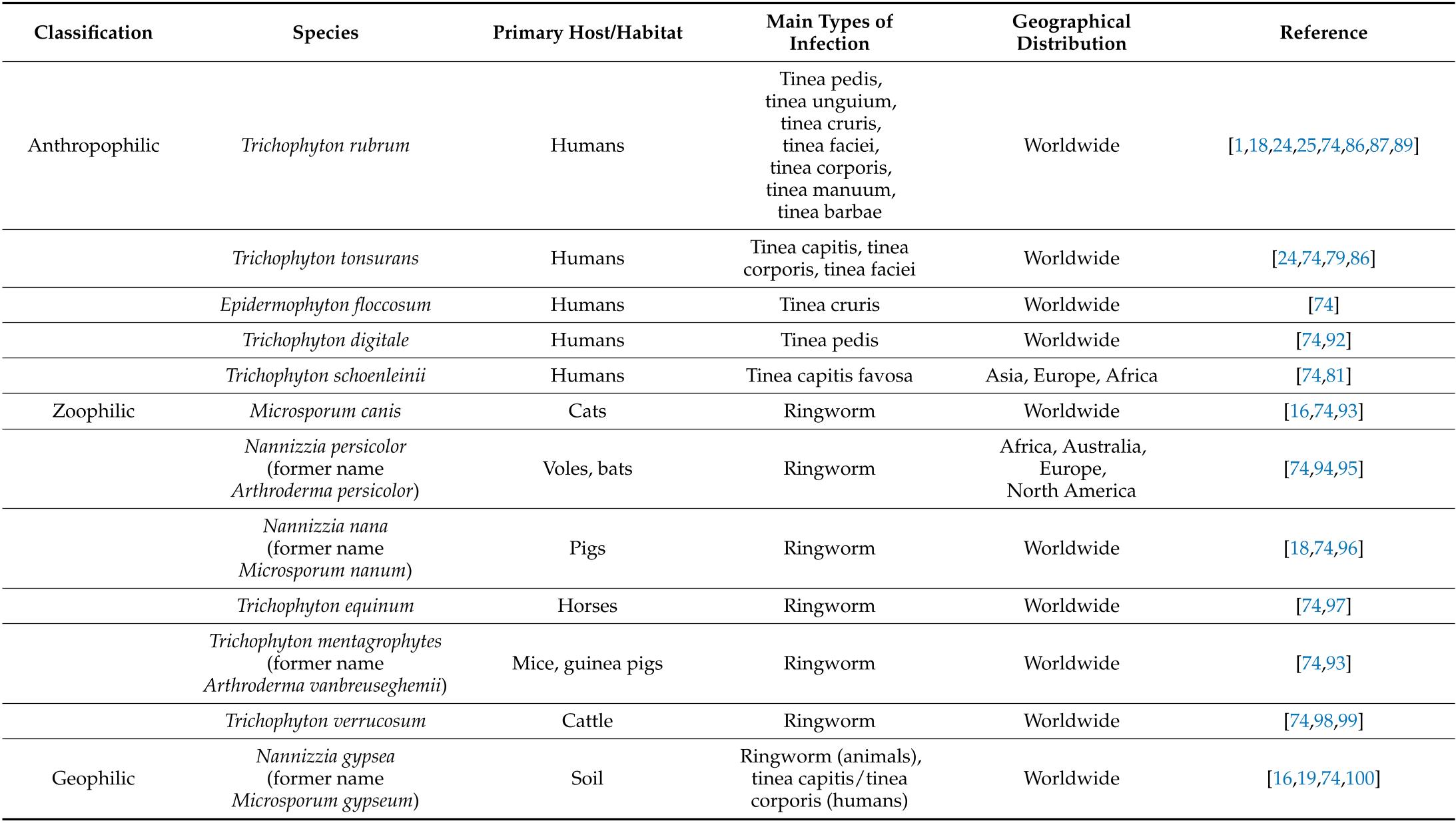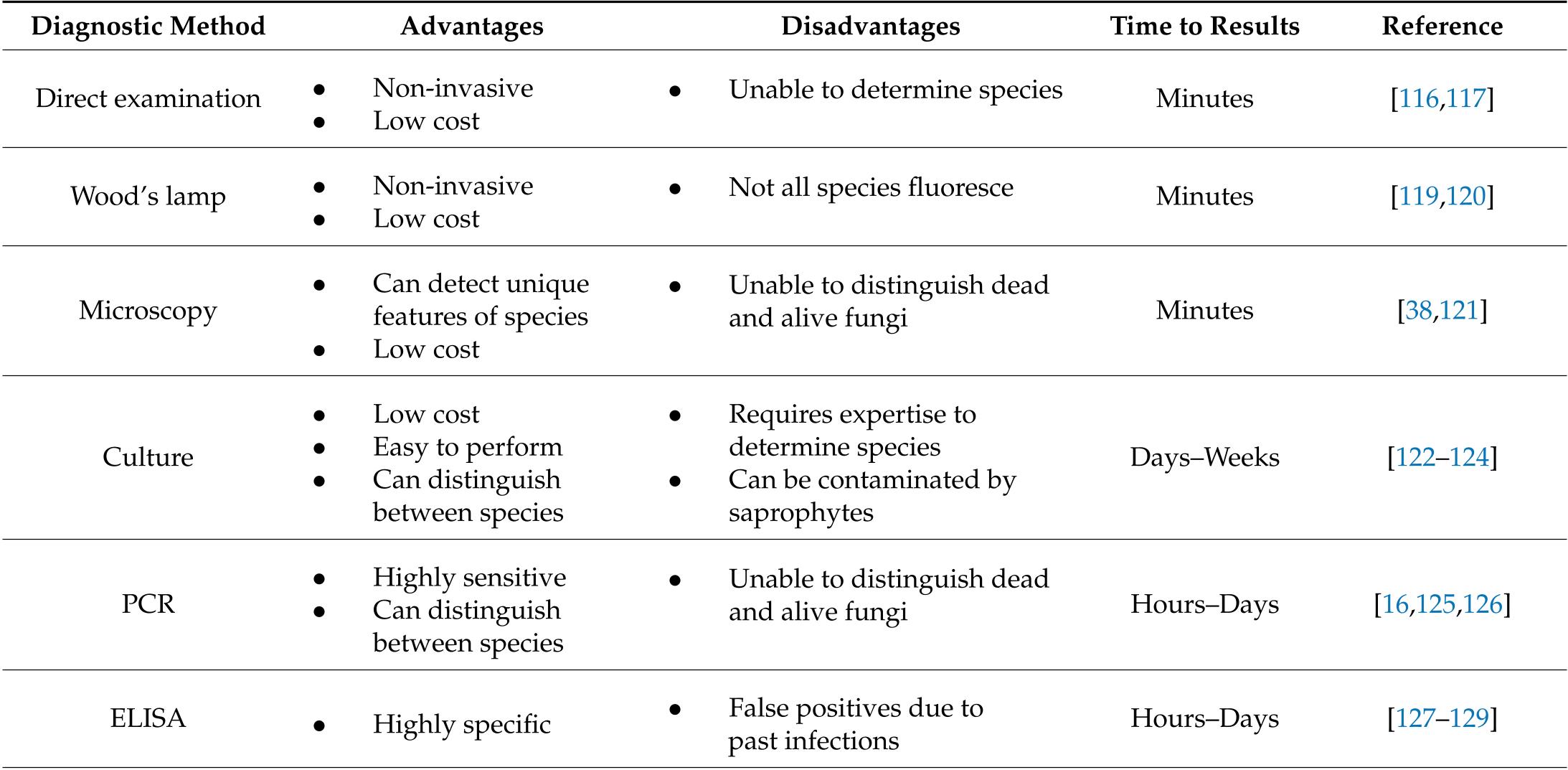Review paper
Current Topics in Dermatophyte Classification and Clinical Diagnosis
Abstract
Dermatophytes are highly infectious fungi that cause superficial infections in keratinized tissues in humans and animals. This group of fungi is defined by their ability to digest keratin and encompasses a wide range of species. Classification of many of these species has recently changed due to genetic analysis, potentially affecting clinical diagnosis and disease management. In this review, we discuss dermatophyte classification including name...
Figures & Tables

Table 1. Classification of most common dermatophytes causing infections in human...

Table 2. Comparison of diagnostic methods for detecting dermatophytes.

Table 2. Cont.

Figure 2. Classification of dermatophytosis in humans. Anatomic location of infe...

Figure 3. Histopathology of common histologic features of dermatophytosis. (A,C,...

Figure 3. Histopathology of common histologic features of dermatophytosis. (A,C,...

Figure 4. Common dermatophytes grown in Sabouraud dextrose agar (SDA) medium. (A...

Figure 4. Common dermatophytes grown in Sabouraud dextrose agar (SDA) medium. (A...
Paper Details
Title
Current Topics in Dermatophyte Classification and Clinical Diagnosis
Published Date
Aug 23, 2022
Journal
Volume
11
Issue
9
Pages
957 - 957
TrendsPro
You’ll need to upgrade your plan to Pro
Looking to understand a paper’s academic impact over time?
- Scinapse’s Citation Trends graph enables the impact assessment of papers in adjacent fields.
- Assess paper quality within the same journal or volume, irrespective of the year or field, and track the changes in the attention a paper received over time.
Citation AnalysisPro
You’ll need to upgrade your plan to Pro
Looking to understand the true influence of a researcher’s work across journals & affiliations?
- Scinapse’s Top 10 Citation Journals & Affiliations graph reveals the quality and authenticity of citations received by a paper.
- Discover whether citations have been inflated due to self-citations, or if citations include institutional bias.